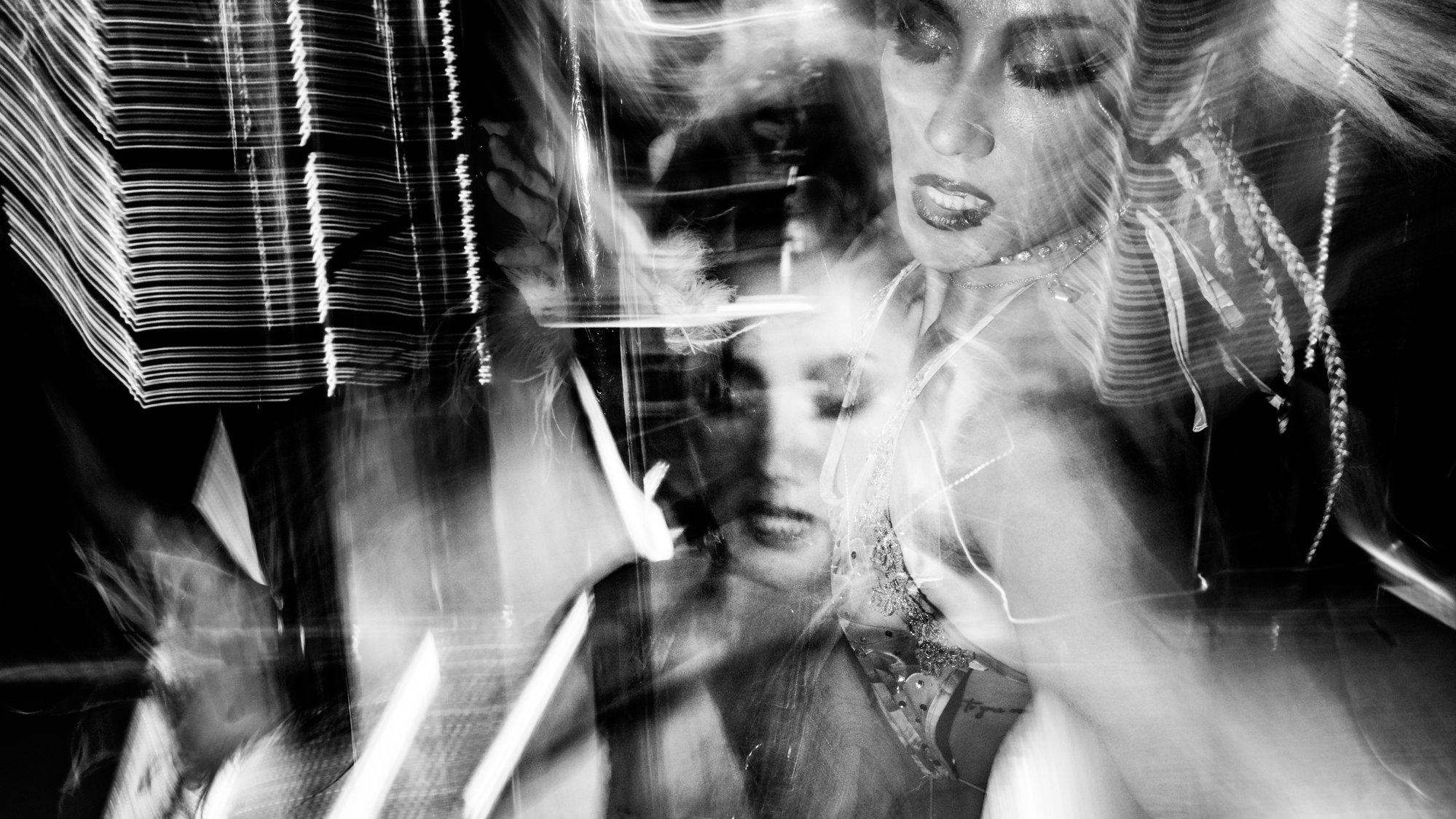Insights from 'The Things Not Seen Are Eternal' by Herman Ellis Dyal
Welcome to this edition of [book spotlight]. Today, we uncover the layers of 'The Things Not Seen Are Eternal,' by Herman Ellis Dyal (published by GOST books) . We'd love to read your comments below about these insights and ideas behind the artist's work.
In the evocative photographic journey of The Things Not Seen Are Eternal, Herman Ellis Dyal invites us into the cavernous halls of Riverside Church in San Antonio, a space where echoes of a vibrant past blend with the poignant realities of the present. A spontaneous visit in 2021 to a church he last entered half a century ago leads Dyal, an architect turned photographer, through the remnants of this once-thriving community hub. His lens captures the stark beauty of disuse—empty chairs, faded hymnals, and abandoned toys tell the story of a congregation that has dwindled to a mere handful of faithful souls.
Dyal’s series of photographs, absent of people yet heavy with their unseen presence, offers a contemplative look at what remains when communal spaces fall silent. Through his architectural eye, each image masterfully encapsulates the interplay of light and shadows, the textures of decay, and the quiet dignity of a space that has seen better days. These visual narratives are complemented by archival images of the church’s heyday, providing a stark contrast that underscores the transformation and prompts reflection on the broader shifts within society itself.
“I was 72 years old as I began this project, and had recently retired from a very busy and rewarding practice as an architect. In retirement I was able to slow down, taking the time to really… look. The luxury of quiet time. As a young man, I likely would have been too impatient for a project like this. But I’m now at an age where one tends to focus more on memory, mortality, beliefs and doubts, and the other big questions.” - Herman Ellis Dyal
Journey Back in Time: After not setting foot in Riverside Church for 50 years, what inspired you to document its interior and what was the first emotion you felt upon reentering?
Riverside was one of the great and large churches of the city at the time of my birth in 1950, with a membership peaking at 2,000 or so members. My entire extended family were members of the church, and it was the center of their community and spiritual lives. My personal experience with the church building ended in the late 1960s as I went off to college. I knew that, like a lot of churches, membership decreased over the years, with demographic changes in the neighborhood and larger cultural changes in the country. As my grandparent’s and parent’s generation died, my siblings and cousins and I moved on to other cities and communities. Indeed, I thought that the church ended services and closed years ago. It certainly appeared that way on the outside, as grounds were largely unkept and the building itself looked worn and boarded up. It was only a chance encounter, as I saw an open door one day in 2022, that I walked in and learned that a dozen or so longtime and mostly elderly parishioners still gather on Sundays in a small corner within the church complex. Most spaces within the buildings are now without electricity and with the presence of asbestos. My first emotion upon entering was one of surprise that the church was still functioning. But as I explored the complex I was amazed at the quality of light as it played against the spare walls. It quickly became clear to me that this could be a rich and deeply personal project - not only to take photographs, but to get to know the remaining members of the small congregation.
Architect’s Eye: How has your background in architecture influenced your approach to photographing the church’s interior spaces?
How the built environment (architecture) reveals its age and use can have an emotional power. How colors fade, how surface wear, and how light plays against such may prompt powerful plays on memory and mortality.
Absence and Presence: Your photographs are described as heavy with echoes of past human presence. How did you capture the sense of presence in absence?
As I spent time alone in the mostly darkened and empty spaces, I variously experienced two distinct and completely contradictory feelings: I felt the profound absence of people at times (I felt completely alone), while at other times I sense the profound presence of people - or were they spirits? The mind plays.
Spiritual Exploration: Can you elaborate on how this project became a reflective journey wrestling with notions of the divine, belief, and non-belief?
Like most people, my “regular” daily life consists of chores, ToDos, errands, cooking, exercise, fun, work, etc. Spending many hours in a completely quiet and darkened church, imbued with memories and relics of my past and my family’s past took me completely away from my normal life. For me, spiritual exploration requires quiet, focus, the luxury of time (slowing down) and some way of removing myself physically from my usual normal life.
Documentary Intent: Beyond the aesthetic and personal exploration, what do you hope viewers take away from the documentary aspect of the church’s current state?
I don’t have particular intentions regarding what I hope viewers take away from the photographs. What I have heard from a number of people - particularly those people of a certain age - is that various photos have deeply impacted them, reminding them of their earlier lives, and people who were once part of their lives.
Archival Contrast: How do the archival photographs of the church in its heyday juxtapose with your contemporary images, and what dialogue do they create about time and change?
The archive photos are very specific to me. My aunts and uncles are here. My cousins and siblings are here. I’m even in one of the photos as a three year old. However, some people who experience the archive through the book seem to see the faces in these old photos and snapshots as indicative or suggestive of people in their own past. To me, the archive photos ground the contemporary photos, providing context, without dispelling the inherent mystery of the environment.
Creative Process: Could you describe your process and experience of photographing the church, especially the challenge of capturing its quiet and darkened spaces?
While I had a very long career as an architect and designer, I was very new to “serious” photography at the time I started taking photos of Riverside. The physical challenges of the process were working in darkened spaces, often in heat, dust, and the presence of asbestos. I used no supplemental lighting. (In fact, I’ve not yet learned how to use supplemental lighting.) Almost all photos employed a tripod and long exposures. Many of the photos were taken with a Leica M10-R. I found the Leica app very helpful for composition, etc. Additional photos were taken with a Chamonix 4x5 camera.
Legacy and Future: As this project reflects on the secularization of society and dwindling church attendance, what reflections or predictions do you have about the future role of such community spaces?
It’s clear that for many, the institutional Christian church, and its community and culture are fading, if not largely gone. Churches that were once vibrant centers of community, where spiritual journeys and formation were marked with births, baptisms, weddings, funerals, Easter, and Christmas are closing. Buildings are temporal. What, if anything, is eternal?
To discover more about this intriguing body of work and how you can acquire your own copy, you can find and purchase the book here. (Amazon, GOST Books)
Herman Ellis Dyal
Herman Ellis Dyal, born into a family deeply integrated into the fabric of Riverside Church’s community, has evolved from observing architectural forms to capturing them through his lens. Holding a Bachelor of Architecture degree from the University of Texas at Austin and a Master from Tulane University, Dyal’s illustrious career in architecture includes significant tenures at renowned firms like Skidmore, Owings & Merrill and Philip Johnson Architects. His deep understanding of space and structure infuses his photography, bringing an architectural perspective to the art of image-making. Dyal’s contributions to architecture have been recognized with his election to The College of Fellows of The American Institute of Architects and his receipt of the Fellow Award by the American Institute of Graphic Arts, Austin, in 2018. The Things Not Seen Are Eternal marks his first venture into photographic monographs, where he explores themes of memory, belief, and the passage of time. (Website, Instagram)
More photography books?
We'd love to read your comments below, sharing your thoughts and insights on the artist's work. Looking forward to welcoming you back for our next [book spotlight]. See you then!



















